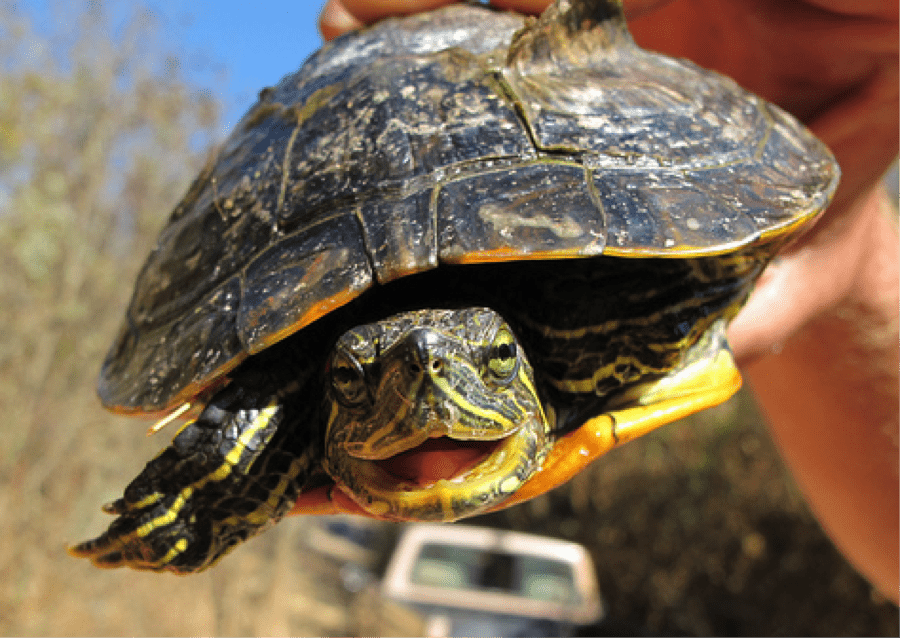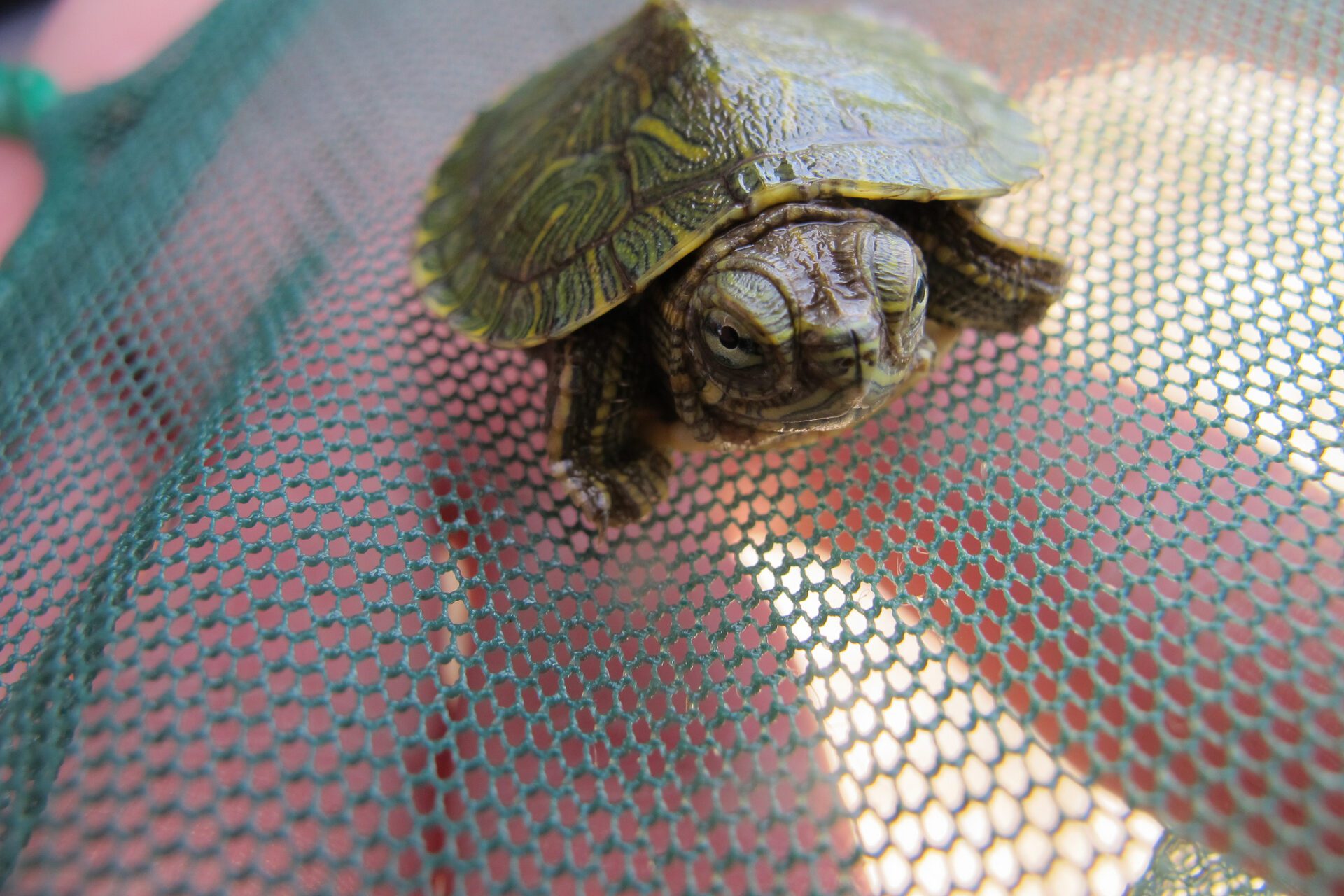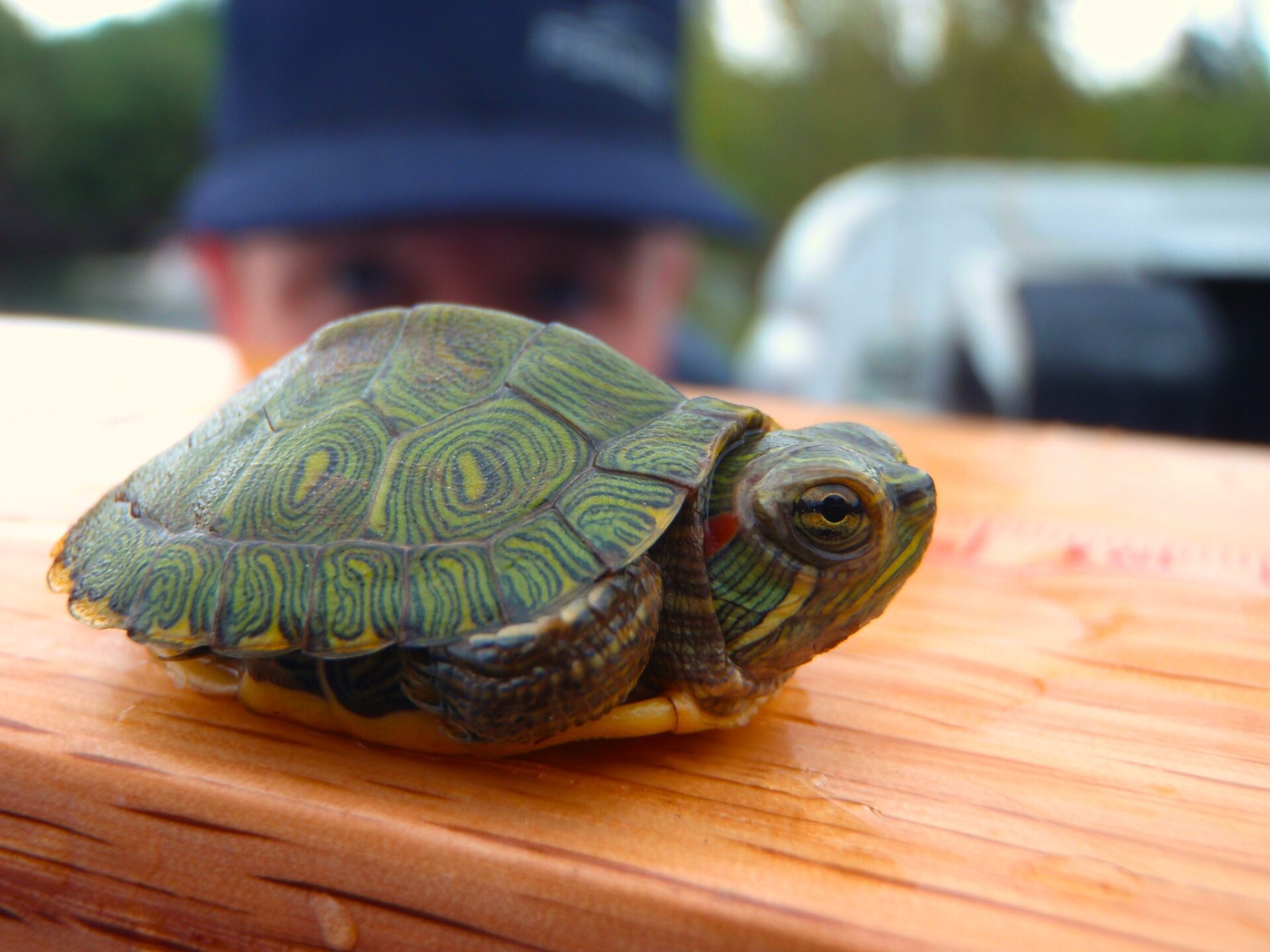Wednesday July 23, 2014
 If a name was ever indicative of a pet’s affordability, the dime-store turtle – more commonly know as the red-eared slider (Trachemys scripta elegans) – would surely fit the bill. Known by a number of different names in the rest of the world, more than 52 million red-eared sliders were exported as pets from the United States between 1989 and 1997 alone, attesting to the species’ popularity far beyond domestic borders (Telecky 2000). In response to a large number of human cases of Salmonella, a bacteria commonly associated with turtles, in the 1970s, the Food and Drug Administration prohibited the sale of turtles with a shell less than four inches in length in an attempt to limit their popularity as pets and reduce the risk of human infection, particularly in children. However, this regulation seems to have done little to curb the spread of the species in our waterways through releases by pet owners who have grown weary of taking care of their turtles: the red-eared slider is now considered the most widely invasive reptile species in the world (Kraus 2009).
If a name was ever indicative of a pet’s affordability, the dime-store turtle – more commonly know as the red-eared slider (Trachemys scripta elegans) – would surely fit the bill. Known by a number of different names in the rest of the world, more than 52 million red-eared sliders were exported as pets from the United States between 1989 and 1997 alone, attesting to the species’ popularity far beyond domestic borders (Telecky 2000). In response to a large number of human cases of Salmonella, a bacteria commonly associated with turtles, in the 1970s, the Food and Drug Administration prohibited the sale of turtles with a shell less than four inches in length in an attempt to limit their popularity as pets and reduce the risk of human infection, particularly in children. However, this regulation seems to have done little to curb the spread of the species in our waterways through releases by pet owners who have grown weary of taking care of their turtles: the red-eared slider is now considered the most widely invasive reptile species in the world (Kraus 2009).
 While it is inherently difficult to determine if one invasive species is “worse” than another, the red-eared slider has the dubious honor of being one of only two reptiles included in the list of the World’s Worst Invasive Alien Species (in addition to the brown tree snake, which made the list for its infamous devastating impact on native birds of Guam). Where introduced, red-eared sliders may transmit diseases to which native turtles are not resilient (Ernst & Lovich 2009), prey upon and compete with native species for food (Polo-Cavia et al. 2010), reduce survival of native turtles (Cadi & Joly 2004), and displace them from their favored basking sites (Cadi and Joly 2003) The impact of red-eared sliders on the abundance and distribution of western pond turtles (Actinemys marmorata, the only turtle native to California) remains poorly studied. However, natural reproduction by sliders in the Central Valley suggests that these exotics will be a permanent addition to the California biota, just like several others from the list of worst invasive species we’re bound to come across on any given day of fieldwork: water hyacinth, mosquitofish, carp, and largemouth bass, to name a few. These species are a constant reminder that we live and work in one of the most invaded aquatic ecosystems in California.
While it is inherently difficult to determine if one invasive species is “worse” than another, the red-eared slider has the dubious honor of being one of only two reptiles included in the list of the World’s Worst Invasive Alien Species (in addition to the brown tree snake, which made the list for its infamous devastating impact on native birds of Guam). Where introduced, red-eared sliders may transmit diseases to which native turtles are not resilient (Ernst & Lovich 2009), prey upon and compete with native species for food (Polo-Cavia et al. 2010), reduce survival of native turtles (Cadi & Joly 2004), and displace them from their favored basking sites (Cadi and Joly 2003) The impact of red-eared sliders on the abundance and distribution of western pond turtles (Actinemys marmorata, the only turtle native to California) remains poorly studied. However, natural reproduction by sliders in the Central Valley suggests that these exotics will be a permanent addition to the California biota, just like several others from the list of worst invasive species we’re bound to come across on any given day of fieldwork: water hyacinth, mosquitofish, carp, and largemouth bass, to name a few. These species are a constant reminder that we live and work in one of the most invaded aquatic ecosystems in California.

